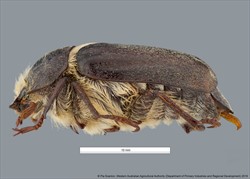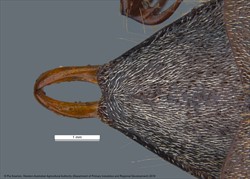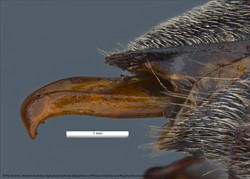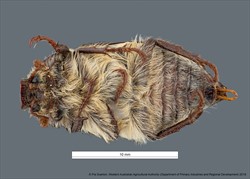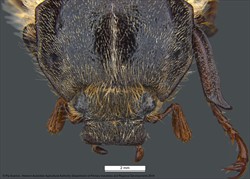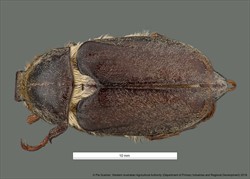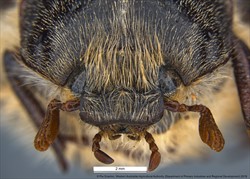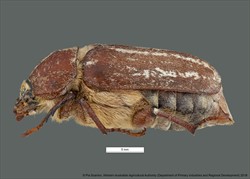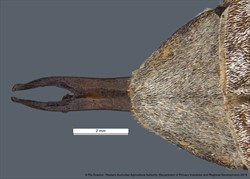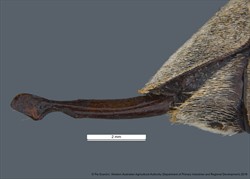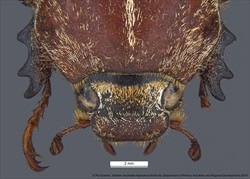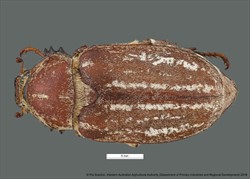Sub family: Melolonthinae / Tribe: Melolonthini / Genus: Anoxia
Fact Sheet
Anoxia Laporte de Castelnau, 1833
Large cylindrical beetles, body length 18-35mm. Body colouration light to dark brown, or reddish brown. Legs often darker. Elytra of some species with white scales arranged in longitudonal bands that can be rubbed off relatively easily. Clypeus large and prominent, with apex subquadrate and sometimes very slightly emarginate, covered in scale-like setae. Labrum located under the clypeus, clearly separated and deeply incised medially, commonly with medially directed setae on each lobe. Antennae with 10 segments. Males with a 5 segmented, elongated club. Females with a shorter 4-5 segmented club. Scales and setae can be present on the pronotum that lacks a membraneous anterior margin. Male foretibia unidentate, females tridentate. Mesometasternal process absent. Metasternum setose. Tarsal claws with a basal tooth.
Both pest species larvae preferably develop in salty, sandy soil. A. orientalis has a 3-4 year lifecycle. Mature larvae form the primary pest stage, which cause damage to the root systems of young fruit trees and grape vines. A. pilosa is a pest of pine trees, the larvae damaging the roots of young pine plantations and adults feeding and often skeletonising their leaves.
Anoxia are primarily western Palearctic in origin. A. orientalis is widespread from Hungary to Sicily and through Greece to Ukraine, while A. pilosa is distributed from Northern Italy through to Poland and Ukraine.
The genus is absent from Australia.

